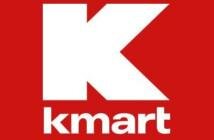Americans are expected to increase their spending for Father’s Day this year with a larger share of dollars going toward events or experiences, according to the National Retail Federation’s annual survey conducted by Prosper Insight & Analytics.
Father’s Day shoppers are expected to spend an average of $134.75 for the holiday, up from last year’s $125.92. With 77% of consumers surveyed celebrating, total spending is expected to reach $15.5 billion. That’s the highest number in the survey’s 15-year history, topping last year’s previous record of $14.3 billion.
“It’s encouraging to see that consumers are spending on special occasions such as Father’s Day,” said Matthew Shay, NRF president and CEO. “This is a positive sign of strong consumer confidence heading into the second half of the year, and a good deal for all the dads who will reap the benefits.”
The survey found 27% of dads would love to receive a “gift of experience” for Father’s Day — and 25% of shoppers plan to grant that wish with gifts like tickets to a concert or a sporting event.
Next up on the spending list is $2.2 billion on gift cards (given by 43%), followed by $2.2 billion on clothing (46%) and $1.8 billion on consumer electronics (21%). Personal care products such as a bottle of cologne (21%) total $888 million, slightly edging out home improvement supplies (16%) at $885 million. Greeting cards are the most common gift, purchased by 64% of consumers, but only account for $861 million of projected spending.
“With shoppers planning to be more generous to dad this year, the personal care category will be one to watch,” said Pam Goodfellow, Prosper’s principal analyst. “Planned spending on items like cologne, aftershave and razors rose nearly 20% year-over-year, outpacing growth in every other gift category for Father’s Day.”
When searching for the perfect gift, 40% of consumers will head to department stores, 34% will shop online, 26% will shop at a discount store, 24% at a specialty store and 19% at a local small business. Among smartphone owners, 33% will use them to research gift ideas but only 18% will use them to make a purchase. Tablets are used slightly less frequently to research (32%) but slightly more frequently to buy (19%).
The survey of 7,335 consumers was conducted May 2-9 and has a margin of error of plus or minus 1.2 percentage points.




